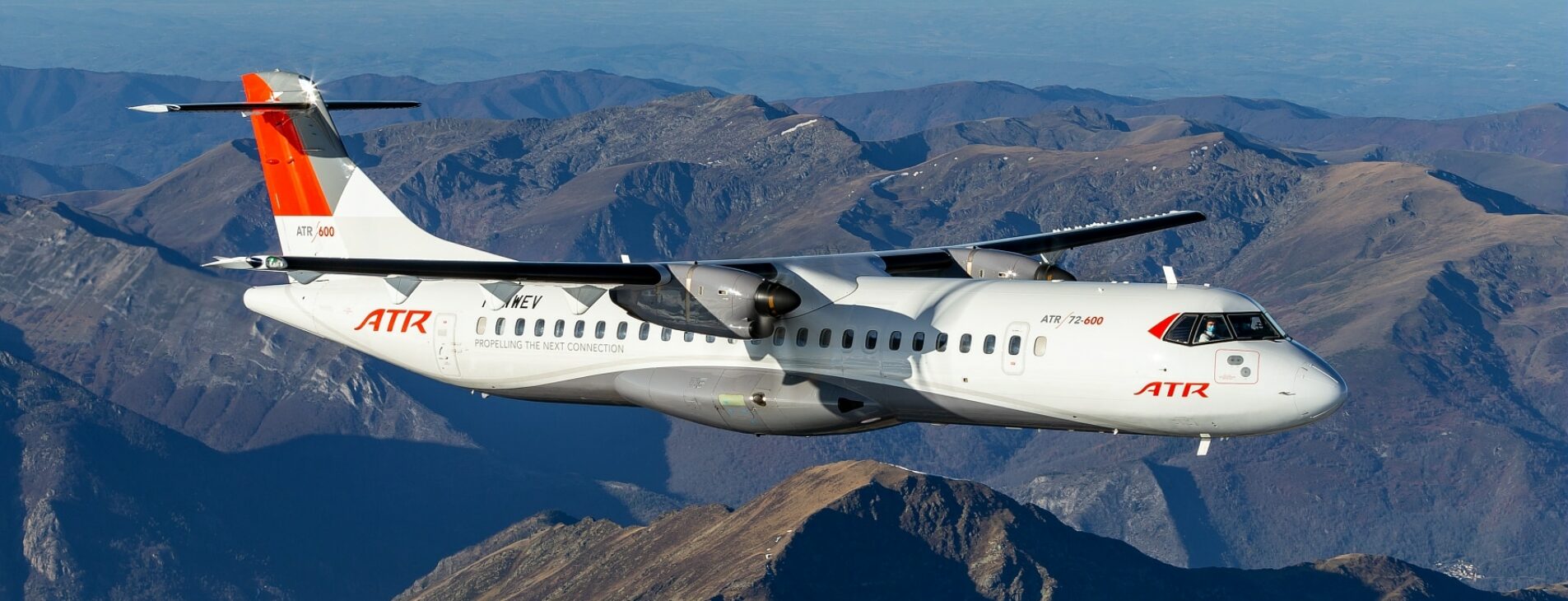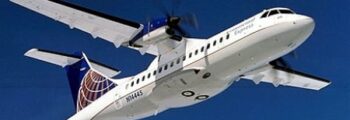ATR’s aircraft have the particularity of being regional transport aircraft. They can carry up to 78 passengers.
ATR
ATR: Avions de Transport Régional is an economic interest group (EIG) between two aircraft manufacturers. These two aircraft manufacturers are Airbus (European aircraft manufacturer) and Leonardo (Italian aircraft manufacturer). They both own equal shares in this grouping. The ATR group, whose current CEO is Stefano Bortoli, manufactures two main categories of aircraft, the ATR 42 and ATR 72. A look back at the history, the fleet and the initiatives carried out by this aviation company.
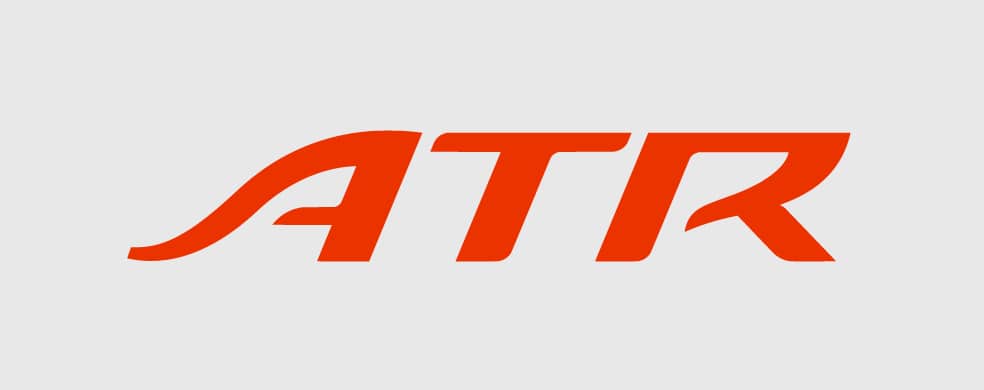
The foundation of the ATR group
In 1981, the ATR group was created in Paris, not far from Le Bourget airport. The company initially had to find its feet among major competitors, such as Boeing. Following its creation, a project on an airliner appeared, this being the ATR 42. The main idea being to link efficiency on board, practicality and maneuverability of the aircraft as well as having accessible maintenance. Once done, the plane was to be manufactured and the year after, in 1982, the first orders appeared. Airlines such as Finnair, Air Littoral, Cimber Air and Command Airways were looking for ATR 42 deliveries in their fleets.
Two years later, in 1984, the ATR 42 jet made its first flight. The aircraft obtained certification the following year by the GIE member countries (France and Italy).
Finally in 1985, the ATR 42 made its first commercial flights with the French airline Air Littoral.
In 1989, the ATR 72 was born. It was an evolved version of the ATR 42 which came before, but more spacious and a longer aircraft.
Until 1996, many other versions of the ATR 42 were considered, however in that year the ATR 42-500 replaced all versions of the ATR 42.
The ATR’s challenges and improvements
ATR is made up of two main aircraft, the ATR 42 and 72. However, from the 90’s onwards for about fifteen years, the company struggled to grow. And for good reason, the propeller turboprops built by ATR were in competition with jet aviation. This is due to the lower cost of fuel used by the latter. However, the oil crisis around this time was a godsend for the company, which manufactures fuel-efficient aircraft, which put ATR back on track.
With an average of 50 ATR deliveries per year since 2000, it was in 2011 that the company reached a record. That year the aircraft manufacturer sold 157 planes (and had 79 in waiting). Since then, about 200 airlines have had at least one of their aircraft in their fleet. Moreover, a new version of the ATR 72 was a great success and allowed the company to reach a turnover of 1.3 billion euros. After being on the verge of collapse, ATR was well and truly saved from the crisis.
In the following years the company received numerous orders on a regular basis. ATR became a true leader in the aviation industry of these types of aircraft, boasting 37% of sales in the category of aircraft with less than 90 seats.
However, a recent drop in sales occured for the company. The company only sold 10 of the 72 aircraft as originally planned. In 2020 aircraft orders dropped due to the coronavirus pandemic. This was also due to the delay in the aircraft deliveries.
The fleet of 4 ATR aircraft
ATR 42-600
The ATR 42-600 is an ideal turboprop for regional jet routes. Having a range of only 1000 km, this aircraft can not make long-haul journeys. However, it is ideal for group and business flights or air cargo. This aircraft can carry up to 50 passengers depending on the cabin layout. It is a spacious aircraft which guarantees a comfortable journey.
This aircraft is also very good value for money. Its operating cost is lower and during a flight, this aircraft consumes about 30% less fuel than other regional aircraft.
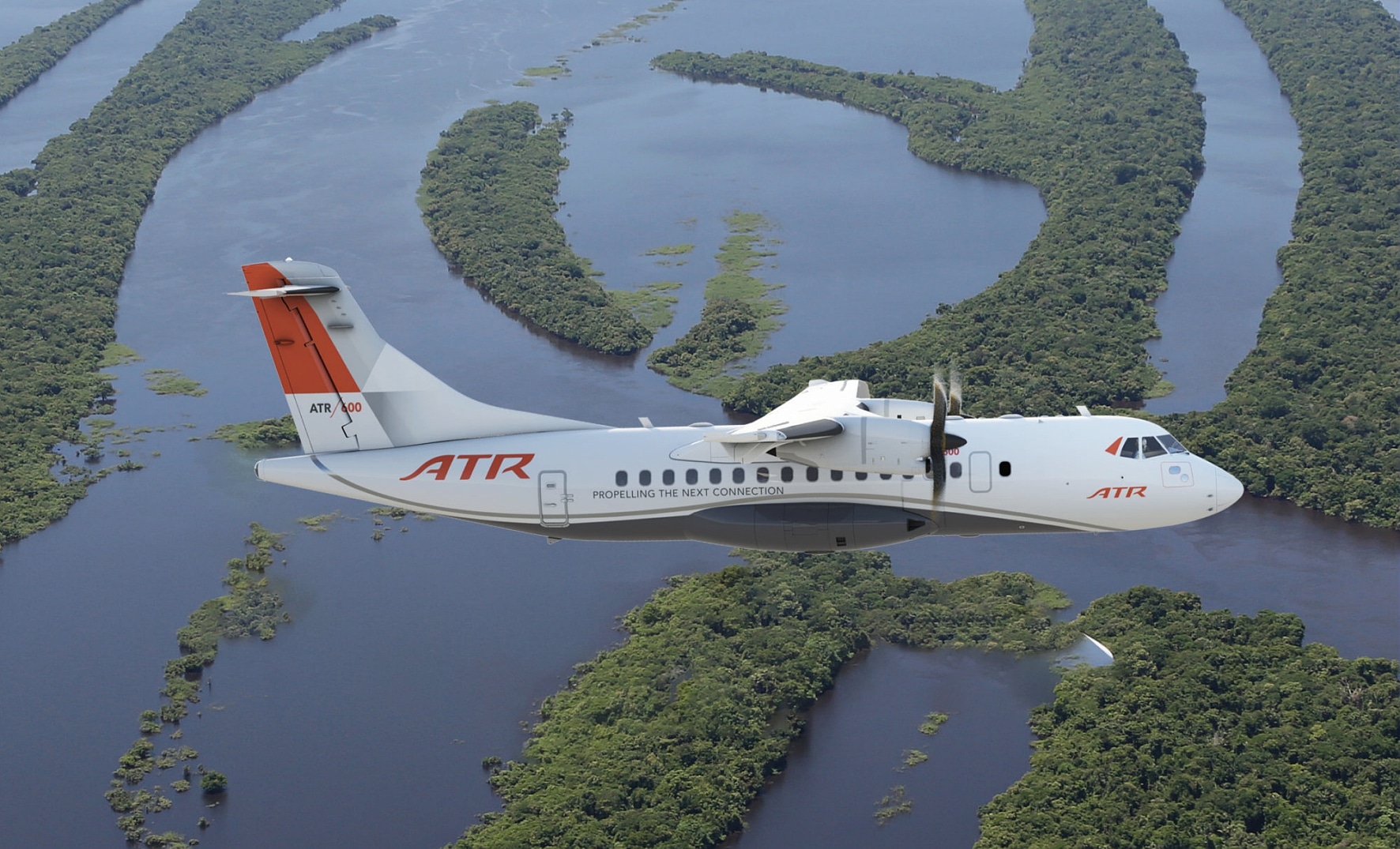
ATR 42-600S (STOL)
This aircraft is based on an improved performance version of the ATR 42, and it proposes a replenishment of the fleet.
The abbreviation STOL (Short Take Off and Landing) refers to short distances for both take off and landings. This aircraft has real improvements to its capability of landing on a short runway. The classic version of the ATR 42 requires a landing distance of 1000 m, however the landing distance of this model is a considerably shorter 773 m. With this, it can access 500 more airports in the world that have a reduced runway between 800 and 1000m. This gives access to some of the most remote areas in the world.
ATR 72-600
This is the most fuel-efficient aircraft in its class. The ATR 72-600 is the extended version of the ATR 42-600. It can carry up to 78 passengers depending on its layout. This fuel-efficient aircraft is ideal for group travel and is very good value for money. It has the lowest cost per seat in regional aviation. This aircraft is the first to be financed with green investment funds. Finally, this regional aircraft has become the first choice for operators in this category due to its adaptability.

ATR 72-600F
Delivered in 2020, the latest cargo aircraft (high capacity) to complete the aircraft manufacturer’s fleet is the ATR 72-600F. In an unprecedented way, these aircraft models are manufactured for air freight and cargo flights only. They do not have any windows. If they are partly manufactured for FedEx, these cargo planes can carry up to 75 m3 of goods. They can also be commandeered for missions for the common good and to support regional economies. For example, during the coronavirus pandemic, these aircraft transported medical supplies and other essential products, mainly to remote and inaccessible areas of the world. This model of aircraft is helping ATR in building on its mission of transporting goods, wishing to help all communities around the world.
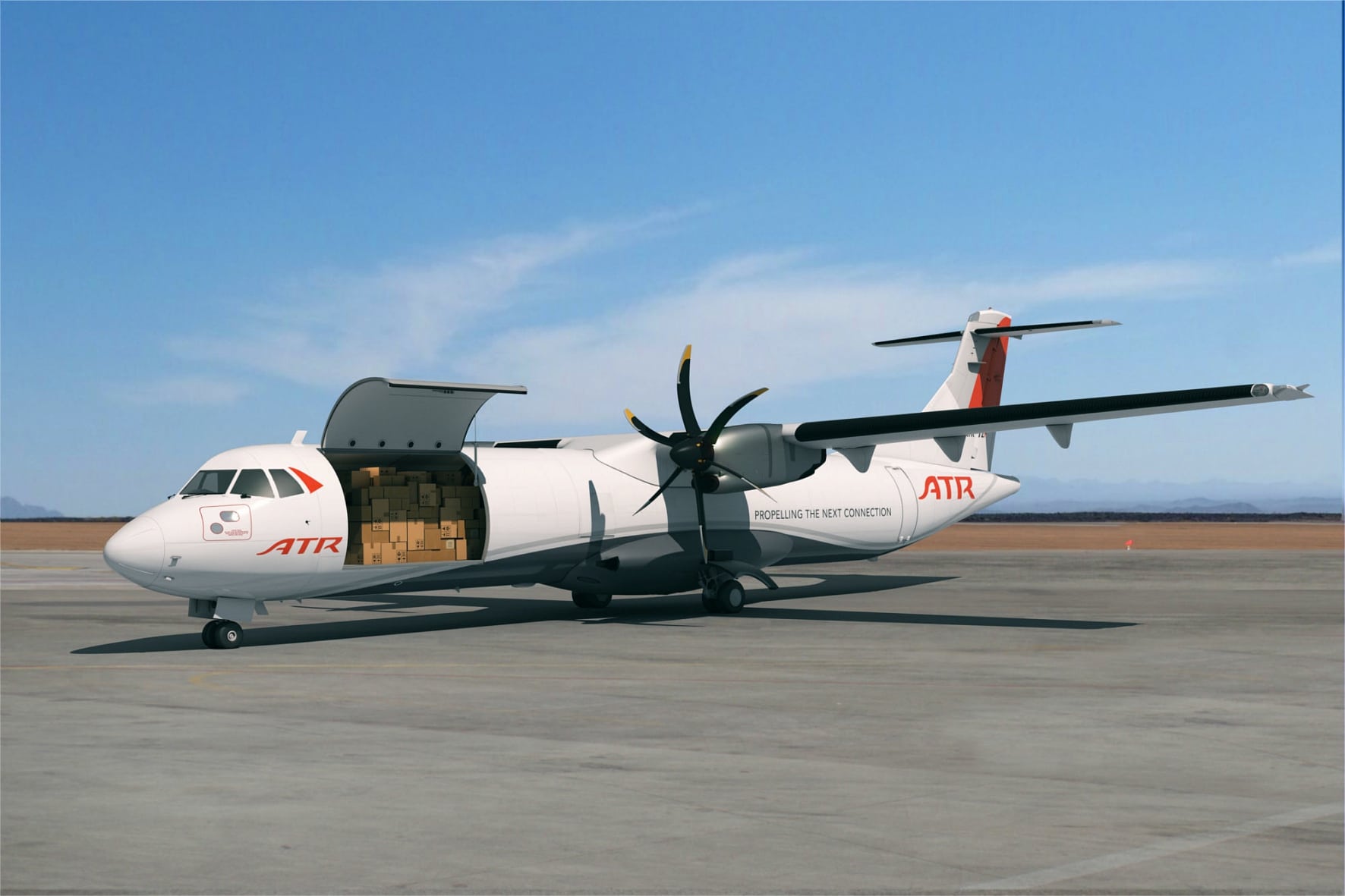
The building of the ATR aircraft
As ATR is a joint group between the two companies Leonardo and Airbus, the aircraft are manufactured in different places depending on the parts. For example, the fuselage as well as the various parts of the tail section are produced by the Leonardo company in Italy. The wings of the aircraft are manufactured by an Airbus subsidiary in the outskirts of Bordeaux in France. Finally, ATR carries out all the final operations for these aircraft (building, testing, deliveries, etc.) in Toulouse, on one of the Airbus sites.
Initiatives of ATR today
A worldwide presence
One of the main aims that the ATR company wishes to meet is to create and manufacture aircraft with the aim of providing worldwide coverage to its customers for different needs. Another of its main aims is to manufacture regional turboprop aircraft that are as versatile as possible. ATR is trying to adapt to the needs of its customers by offering to modernize its fleet. It is comfortable and state of the art. The idea of being able to operate in as many parts of the world as possible for increasingly more specific needs is what ATR is doing. In addition to producing high-performance aircraft that meet the needs of its operators, ATR makes it a priority to have an increasingly positive environmental impact.
Reducing CO2
For the aviation company, the reduction of CO2 emissions and the fight against global warming are real challenges.
On the one hand, the fact that we are investing in the development of regional turboprop aircraft is a real advantage. They consume less fuel than similar aircraft with turbojet engines. To compare, this represents a reduction of about 40% in fuel consumption.
In addition, the aircraft of the aviation company are able to fly with 50% of biofuels called SAF (Sustainable Aviation Fuel). Their goal is to increase this rate to 100% within the next few years.
Similarly, in January 2021, the company set up a rechargeable power supply from renewable energy sources in some of its factories (as well as at its headquarters in the Toulouse region). In addition to limiting the pollution of aircraft in flight, it also limits the pollution during the manufacturing process.
ATR’s objective is to reduce its greenhouse gas emissions by 50% by 2030.
In 2019, the company had excellent evidence regarding its fight against pollution and global warming. It was the first company to benefit from green investment funds (promoting energy transition).
Information about Airbus and Leonardo
As previously mentioned, ATR is the result of a grouping between two companies, Leonardo and Airbus. Here is some more information about these 2 companies which put together and create new services.
Airbus is one of the leading aviation companies in the world. Just to mention a few figures, in 2019, this company achieved a turnover of almost 70 billion euros, mobilising almost 135,000 employees in its various branches. The company is recognised mainly for the diversity of its projects and achievements. In fact, it manufactures both commercial airliners and business aircraft, as well as helicopters. It also operates on services and various parts for space, air cargo and military missions.
Leonardo is an Italian aircraft manufacturer which is also very diverse in terms of its achievements. This major company employs around 46,000 people and operates in nearly 120 locations worldwide. With its strong establishment, it is a leader in the aerospace industry. It manufactures many different types of aircraft, among many other services. In fact, it also carries out tasks in the field of cyber protection or electronics and security.
For your air freight and cargo requirements, as well as group flights, AEROAFFAIRES has the expertise to select the aircraft you desire according to your needs. Fill out the online quote or call us at +33 (0) 1 44 09 91 82.
-
What is special about the planes of the ATR company?
-
What are the regional aircraft of ATR?
There are 4 regional aircraft from the manufacturer ATR:
- the ATR 42-600
- the ATR 42-600 S
- the ATR 72-600
- the ATR 72-600F
-
Is it possible to do cargo flights with an ATR aircraft?
It is possible to carry out air freight or cargo flights with an ATR 72-600F.

